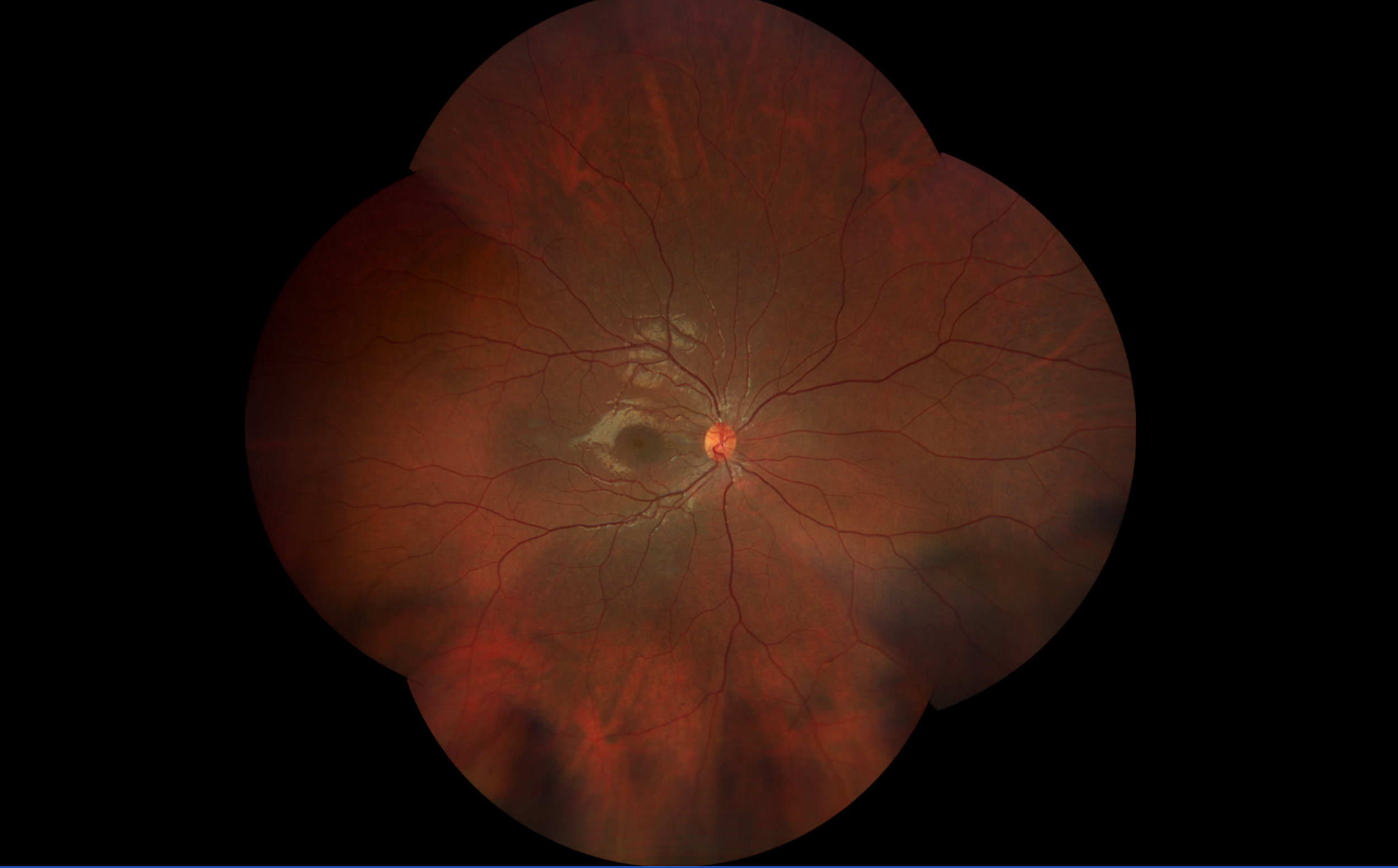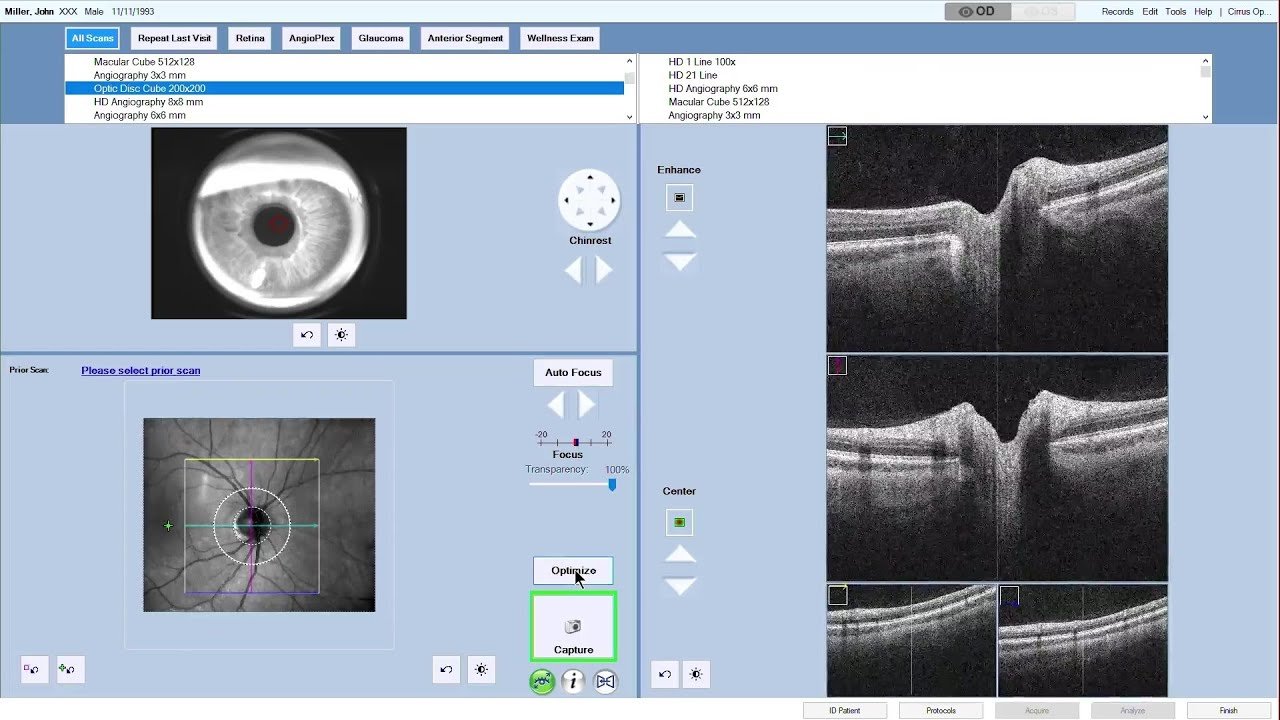Posterior Eye & Retinal Imaging
Standard wide-field fundus imaging captures the optic nerve, macula, midperipheral retina and vasculature in high definition.
Zeiss Clarus 500
Wide-Field Fundus & Autofluorescence Camera
Ultra wide-field and collage imaging captures more of the peripheral retina than standard imaging by stitching multiple images.
Blue autofluorescence uses light of a specific wavelength to stimulate retinal cells, which autofluoresce in response. Cells that are highly metabolically active fluoresce brightly while cells that are atrophic do not fluoresce at all.
Optic nerve and macula scanning identifies all retinal layers (inner limiting membrane, retinal nerve fibre layer, ganglion cell layer, inner plexiform layer, inner nuclear layer, outer plexiform layer, outer nuclear layer, external limiting membrane, photoreceptors, retinal pigment epithelium, Bruch’s membrane as well as choroid) in raster scans and quantifies thickness in printed reports. An ophthalmic professional can also analyse for abnormalities in optic nerve and macular architecture not detected by thickness reports. Changes from baseline scans are shown in progression displays.
Heidelberg Spectralis
Posterior OCT (Optical Coherence Tomography) & Angiography
OCT angiography can also be used to assess blood flow at the macula and optic nerve.
Much like the Heidelberg Spectralis, the Zeiss Cirrus captures macular and optic nerve raster scans, thickness maps, progression displays and OCT angiography.







